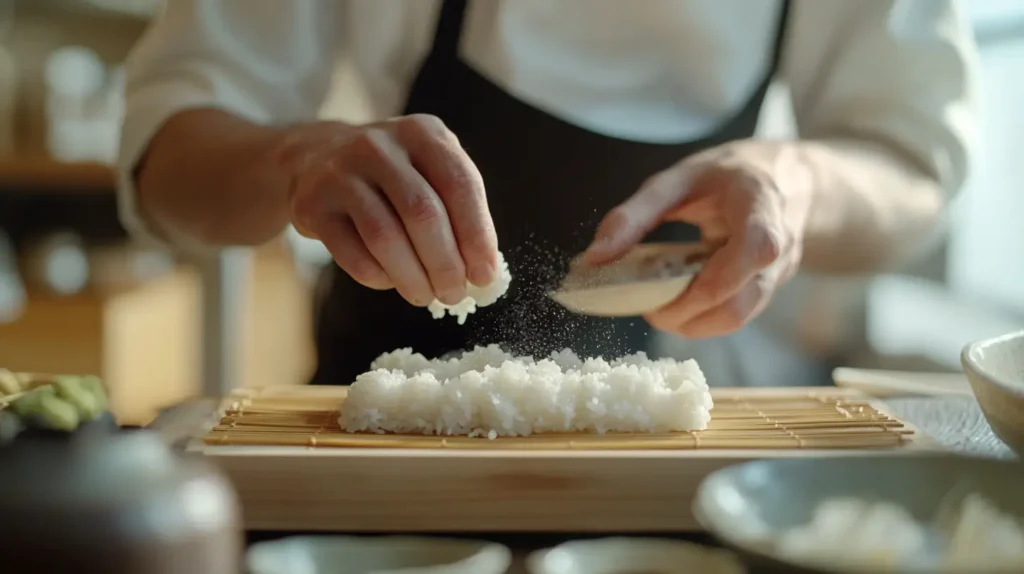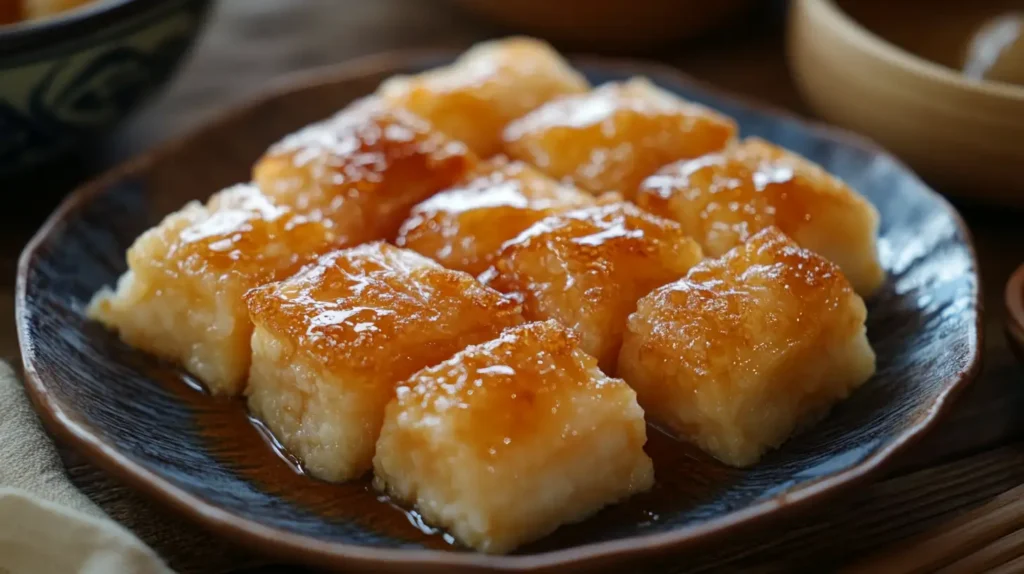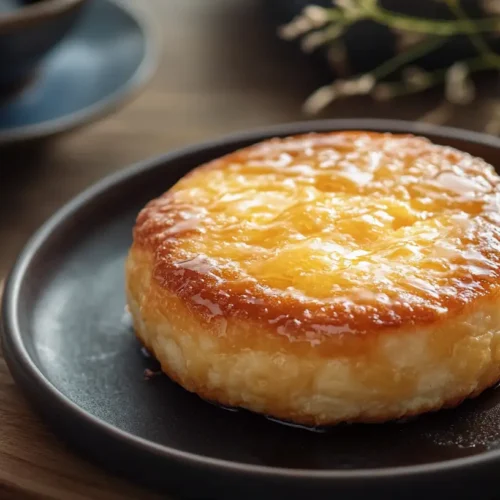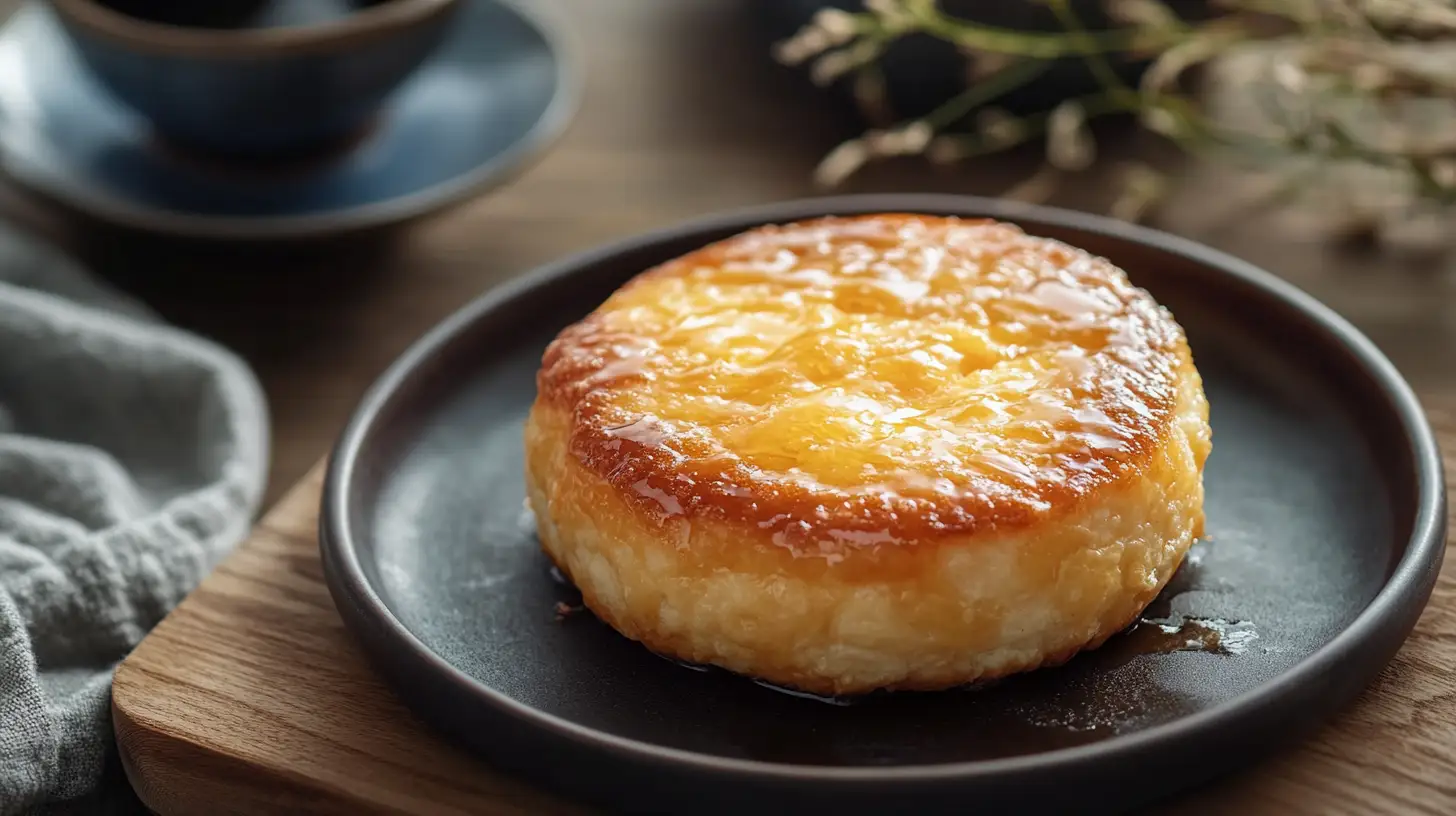Table of Contents
Baking Japanese might sound like a niche hobby, but it’s quickly winning hearts across kitchens worldwide — and for good reason. This article dives into the world of Japanese baking, where textures are fluffier, flavors are subtler, and aesthetics play a starring role. From cloud-like cheesecakes to nostalgic anpan buns, Japanese-style baked goods strike a delicate balance between comfort food and fine artistry.
We’ll explore what makes baking Japanese so special, how traditional methods meet modern techniques, and even show you how to make your own light-as-air Japanese cheesecake. Plus, we’ll answer those curious questions like what is a Japanese muffin called? or why are their desserts so different from Western ones?
Ready to whip up something delightfully different? Let’s jump in.
Introduction to Baking Japanese
What Sets Japanese Baking Apart
If you’ve ever bitten into a melonpan or watched a Japanese soufflé cheesecake jiggle like a dream, you already know — Japanese baking is in a league of its own. It’s not just about taste, it’s about experience. Soft, pillowy textures, precise sweetness, and delicate flavors make these treats both comforting and refined.
Unlike many Western pastries, Japanese baked goods tend to go light on sugar and butter. They favor mochi-like chew, custardy textures, and airy crumbs. You’ll also find ingredients like matcha, kinako (roasted soybean flour), and azuki beans popping up in everything from rolls to muffins.
But the real magic? It’s the balance. A Japanese treat rarely overwhelms — it gently invites.
Global Fascination with Japanese Flavors
In recent years, baking Japanese has gone global. Instagram-worthy soufflé pancakes, minimalist bakeries with castella cake, and cafes serving matcha Swiss rolls have popped up from LA to London.
Why the obsession? For many, it’s the aesthetic meets comfort food appeal. These baked goods look like art, yet feel like home. Plus, they cater to evolving tastes — less sugar, smaller portions, more mindful ingredients.
And let’s be honest — who isn’t curious about a cake that jiggles like jelly but tastes like heaven?
What is Baking in Japanese Culture?
Historical Influences: From Castella to Convenience Stores
At first glance, baking Japanese might feel like a modern food trend, but its roots stretch back centuries. Did you know that one of Japan’s oldest cakes, castella, was actually introduced by Portuguese traders in the 16th century? Over time, Japan absorbed these foreign methods but reimagined them with its signature attention to detail and simplicity.
Fast forward a few centuries, and you’ll find fluffy cheesecakes sold in convenience stores, melonpan in school lunch boxes, and baked mochi treats filling café counters. Baking has become an everyday affair in Japan, blending Western techniques with traditional ingredients and delicate textures.
One standout example of this evolution is the rise of cheesecake crescent rolls, which showcase how Japan’s flavor balance continues to influence global dessert trends. These playful fusions are taking over kitchens worldwide — and they’re super easy to try at home.
Minimalism and Precision in Japanese Baking
Unlike Western baking, where bold flavors and rich textures dominate, Japanese baking is about subtlety and control. Think of it like origami — each fold matters, each line has purpose. Whether it’s folding egg whites just right or steaming buns to glossy perfection, every step is deliberate.
And don’t let the “simple” presentation fool you. That delicate sponge cake? It’s a masterclass in technique. The lightly sweet anko-filled bun? It took years to perfect the ratio of dough to bean paste. The Japanese approach is almost meditative — where baking becomes a practice in patience, beauty, and balance.
This calm yet focused mindset is what makes baking Japanese not just a method, but a philosophy you can taste.
What is the Japanese Baking Method?
Unique Techniques: Folding, Mixing, Steaming
So, how is baking Japanese different from what you might be used to? It all starts with the techniques. While many Western recipes rely heavily on butter, sugar, and leavening agents like baking powder, Japanese recipes often lean on air — yes, air! Whipping egg whites into soft peaks and folding them gently is at the heart of many recipes, from soufflé pancakes to sponge rolls.
Steaming is another hallmark method. Instead of dry, crispy crusts, many Japanese treats are soft and chewy — like mushi pan, the steamed muffin that’s more cloud than cake. This technique creates a moist texture that’s totally different from the crumbly muffins you’d find in most American bakeries.
Common Ingredients: Mochiko, Azuki, Kinako & More
Japanese baking swaps out many Western staples for uniquely local ingredients — and that’s where the magic begins. Instead of all-purpose flour, you’ll often find mochiko (sweet rice flour), which gives baked goods that signature chewiness. This is what powers mochi muffins, daifuku, and even certain bread rolls.
Azuki beans (red bean paste) add earthy sweetness without overpowering a dessert, while kinako, a nutty roasted soybean flour, adds depth and aroma to everything from sponge cakes to cookies. And of course, we can’t forget matcha, which not only adds flavor but turns desserts into green-hued masterpieces.
When you’re baking Japanese, it’s not just about following a recipe — it’s about discovering a new pantry of possibilities.
Recipe 🌟 – How to Make the Perfect Baking Japanese Cheesecake
Introduction
Ready to try your hand at baking Japanese? Let’s kick things off with one of the most iconic desserts out there — the Japanese soufflé cheesecake. Often called the “jiggly cake,” it’s a cloud-like, melt-in-your-mouth masterpiece that’s become a global favorite.
Unlike dense Western cheesecakes, this one is lighter, fluffier, and subtly sweet. The secret? It all comes down to technique — and we’ll walk you through it, step by step. You don’t need a fancy kitchen to nail this recipe. Just a little patience and a whisk!
Ingredients 🛒
- 200g cream cheese (softened)
- 60g unsalted butter
- 100ml whole milk
- 60g cake flour
- 20g cornstarch
- 6 large eggs, separated
- 140g sugar
- 1 tsp lemon juice
- Pinch of salt
- Hot water (for the baking water bath)
Directions 👩🍳

- Prep your oven and pan: Preheat your oven to 320°F (160°C). Line the bottom and sides of a round 8-inch springform pan with parchment paper. Wrap the pan with foil to prevent water from leaking in during baking.
- Melt the base: In a small saucepan over low heat, melt the cream cheese, butter, and milk together until smooth. Stir continuously, then remove from heat and let cool for 10 minutes.
- Add dry ingredients: Sift the cake flour and cornstarch into the cheese mixture. Stir gently to combine. Add the egg yolks one at a time, mixing well after each.
- Whip the whites: In a separate bowl, beat the egg whites with lemon juice and a pinch of salt. Gradually add sugar and whip until soft peaks form — think shaving cream, not stiff meringue.
- Fold like a pro: Gently fold the meringue into the batter in three batches. Be slow and steady here — this step keeps your cheesecake ultra-light.
- Bake with a water bath: Pour the batter into your prepared pan. Place the pan inside a larger baking dish and add hot water (about 1 inch high). Bake at 320°F for 25 minutes, then reduce to 275°F and bake for another 30 minutes.
- Cool gradually: Once done, turn off the oven, crack the door slightly, and let the cake cool for 15 minutes. Remove and allow to cool completely at room temperature before serving.
Tips & Variations 📌
- No springform pan? A round cake pan works too — just make sure to line and foil it well.
- Flavor it up: Try adding matcha powder for a green tea twist, or swap lemon juice for yuzu zest.
- Need a shortcut? Some bakers skip the double flour and use self-raising flour — but you’ll lose a bit of that classic bounce.
Chef’s Insight: “This cake is all about technique. The egg whites create lift, so never rush the folding!”
Types of Japanese Baked Goods You Shouldn’t Miss
Sweet Staples: Castella, Melonpan, Anpan
If you’re loving the soft textures and subtle flavors of baking Japanese, you’re going to fall head over heels for these bakery staples. Let’s start with Castella — a golden sponge cake with roots in Portuguese history. Today, it’s a staple in Nagasaki, and you’ll find it everywhere from train stations to fancy gift boxes.
Then there’s Melonpan, a fluffy bun wrapped in a cookie-like crust. Despite the name, there’s usually no melon flavor — it’s all about the look. The crispy topping cracks just enough to make each bite a mix of crunch and fluff.
And who could forget Anpan? These round, soft buns are filled with azuki (sweet red bean paste). You can even spot them in Japanese anime and old-school bakeries. Want to experiment beyond red bean? Try custard or matcha cream fillings for a twist.
If you’re into fun twists on traditional flavors, check out this Tasty recipe for homemade melonpan. It’s easy, fun, and surprisingly beginner-friendly.
Savory Delights: Curry Pan, Yakisoba Pan
Japanese baked goods aren’t all sugar and sweetness — the savory side is just as mouthwatering. Curry Pan is a deep-fried bread roll filled with mild, rich Japanese curry. It’s crispy on the outside, gooey on the inside, and almost too satisfying to stop at one.
Meanwhile, Yakisoba Pan is what happens when carbs meet more carbs. It’s a soft roll stuffed with stir-fried noodles, topped with pickled ginger and mayonnaise. Sounds wild? It is — but in the best possible way.
And here’s a cool fact: Japanese schoolkids often grab yakisoba pan from their cafeteria — kind of like grabbing a pizza pocket here in the States!
Looking for more delicious ideas? Be sure to check out the strawberry cupcake recipe that offers a similar soft and airy texture you’ll love.
What is a Japanese Muffin Called?
The Rise of “Mushi Pan”: Japan’s Fluffiest Muffin
Ever tried a muffin so soft it felt like biting into a warm cloud? That’s mushi pan — Japan’s beloved steamed muffin. Instead of baking in a dry oven, these little guys are gently steamed to perfection, giving them a moist, pillowy texture you won’t find in your typical muffin tin.
So, what makes mushi pan so special? For starters, there’s no crusty top. Instead, you get a smooth, almost bouncy finish with flavors that range from matcha and kinako to chocolate and even sweet potato. It’s a staple in school lunchboxes and bakeries across Japan.
And yes, baking Japanese includes steaming. While it may sound like a contradiction, Japanese home bakers use small steamers to recreate this traditional treat — no oven required!
Looking to try a homemade twist? You might enjoy something similar like this pumpkin muffin recipe that nails that tender, moist crumb — perfect if you’re easing into the world of steamed sweets.
Flavor Profiles: Matcha, Black Sesame, Chocolate-Chip
What’s truly fun about mushi pan is how flexible it is. While classic vanilla and chocolate versions exist, many bakers love playing with local flavors.
- Matcha mushi pan has a gentle bitterness that pairs beautifully with white chocolate chips.
- Black sesame versions add a nutty depth and cool gray hue that’s super Instagram-worthy.
- Even sweet red bean paste can be added to the center for a chewy surprise.
And just like with many baking Japanese staples, the sweetness is subtle — it doesn’t hit you like a sugar bomb, but rather melts gently on your tongue.
Fun fact: Mushi pan is often made with simple pantry ingredients like flour, eggs, and sugar — no special equipment required!
What is a Japanese Dessert Called?
Wagashi vs Yōgashi: Tradition Meets Western Flair
Here’s where things get truly fascinating. In Japan, desserts fall into two main camps: wagashi and yōgashi. Think of it as tradition vs trend, or kimono vs cocktail dress — both beautiful, but oh-so-different.
- Wagashi refers to traditional Japanese sweets, often served with tea. They’re made from ingredients like mochi, anko (sweet bean paste), and kanten (agar agar), and crafted to look like miniature works of art.
- Yōgashi, on the other hand, refers to Western-style desserts adapted to Japanese taste — like roll cakes, puddings, and baked cheesecakes.
So when you’re baking Japanese goodies, you might actually be crafting yōgashi. These are the cakes, tarts, and pastries that blend European techniques with Japanese precision and subtlety.
Want to dive deeper into the sweet side of Japan? You’ll love this comprehensive guide to Japanese desserts that explores both wagashi and yōgashi with delicious examples.
Best-Selling Bakery Favorites in Japan Today
Modern Japanese bakeries are where old meets new. You’ll find handcrafted mochi sitting beside strawberry shortcakes topped with whipped cream. Some of the best-sellers include:
- Japanese cheesecake: Light, jiggly, and endlessly satisfying.
- Strawberry roll cake: A thin sponge filled with whipped cream and fresh fruit.
- Custard-filled cream pan: Think of it as a cream puff… in bun form.
And while these treats are rooted in Japanese baking culture, they also echo global dessert trends — proof that baking Japanese is anything but stuck in tradition.
Many of these bakery hits are inspired by French patisserie styles but tailored to Japanese palates — light, balanced, and perfectly portioned.
Expert Tips for Baking Japanese at Home

Tools You’ll Need: Scale, Sifter, Donabe & More
If you’re diving into baking Japanese goodies, your kitchen doesn’t need to look like a science lab — but a few tools do make a big difference.
First, grab a digital kitchen scale. Unlike many Western recipes, Japanese baking is precise. A few grams off can mean the difference between a fluffy sponge and a dense disaster. You’ll also want a fine-mesh sifter for flour, and a sturdy whisk or electric mixer for whipping up those meringue-like egg whites.
If you’re making mushi pan or steamed cakes, a simple donabe (clay pot) or even a bamboo steamer will do. These tools help replicate the moist environment of traditional Japanese steaming.
Pro tip: Japanese recipes love room-temperature ingredients. Cold eggs straight from the fridge? Not so great for whipping!
Texture Tricks: Why Sifting and Folding Matter
Ask any Japanese home baker, and they’ll tell you — technique is everything. And when it comes to baking Japanese, two methods are sacred: sifting and folding.
Sifting flour isn’t just about removing lumps. It also aerates your dry ingredients, helping you build that feather-light sponge without extra leaveners. Folding, meanwhile, keeps air in your batter — it’s a gentle process, more like guiding the batter than mixing it.
Another technique worth mastering? Water bath baking. Whether you’re making Japanese cheesecake or custard puddings, that warm steam keeps your dessert ultra-moist and silky smooth.
Curious how these techniques translate into real recipes? Try making Japanese soufflé pancakes — they’re a fun (and fluffy!) crash course in folding, whipping, and watching gravity-defying food rise before your eyes.

Japanese Soufflé Cheesecake
Equipment
- Springform Pan
- Mixer
- Baking Dish (for water bath)
Ingredients
Main Ingredients
- 200 g cream cheese softened
- 60 g unsalted butter
- 100 ml whole milk
- 60 g cake flour
- 20 g cornstarch
- 6 large eggs separated
- 140 g sugar
- 1 tsp lemon juice
- pinch of salt
- hot water for water bath
Instructions
- Preheat oven to 320°F (160°C). Line and wrap an 8-inch springform pan for a water bath.
- Melt cream cheese, butter, and milk over low heat until smooth. Cool slightly.
- Sift in cake flour and cornstarch. Mix in egg yolks one at a time.
- Whip egg whites with lemon juice and salt. Gradually add sugar until soft peaks form.
- Gently fold meringue into batter in three parts.
- Pour batter into pan. Place in a water bath and bake 25 mins at 320°F, then 30 mins at 275°F.
- Let cool in oven with door slightly open for 15 mins. Cool completely before serving.
Notes
Conclusion + FAQs
Bringing Japanese Warmth into Your Kitchen
Now that you’ve explored the sweet, subtle world of baking Japanese, it’s clear this isn’t just a trend — it’s a thoughtful, artistic approach to baking that balances flavor, texture, and heart.
From pillowy cheesecakes and steamed muffins to custard-filled buns and mochi-based marvels, every bite reflects the harmony and craftsmanship that defines Japanese cuisine. And the best part? You can start small. All it takes is curiosity, a few fresh ingredients, and a love for detail.
Try These First: Top 3 Beginner-Friendly Recipes
Want to get started without feeling overwhelmed? Begin with these:
- Soufflé Japanese Cheesecake — minimal ingredients, maximum impact.
- Mushi Pan (Steamed Muffins) — soft, fast, and fun to customize.
- Melonpan — perfect for mixing textures, especially for bread lovers.
And don’t be afraid to play. Part of the joy in baking Japanese is how flexible yet forgiving it can be once you grasp the rhythm.
FAQs
1. What is baking in Japanese culture?
Baking in Japanese culture blends Western techniques with local traditions, focusing on light textures, moderate sweetness, and precise execution.
2. What is the Japanese baking method?
Japanese baking often uses gentle techniques like steaming, water baths, and folding egg whites to create soft, airy textures.
3. What is a Japanese dessert called?
Traditional desserts are called wagashi, while Western-influenced baked sweets are yōgashi — both are integral to Japanese culinary life.
4. What is a Japanese muffin called?
It’s called mushi pan, a soft, steamed muffin made in flavors like matcha, black sesame, and even sweet potato.

